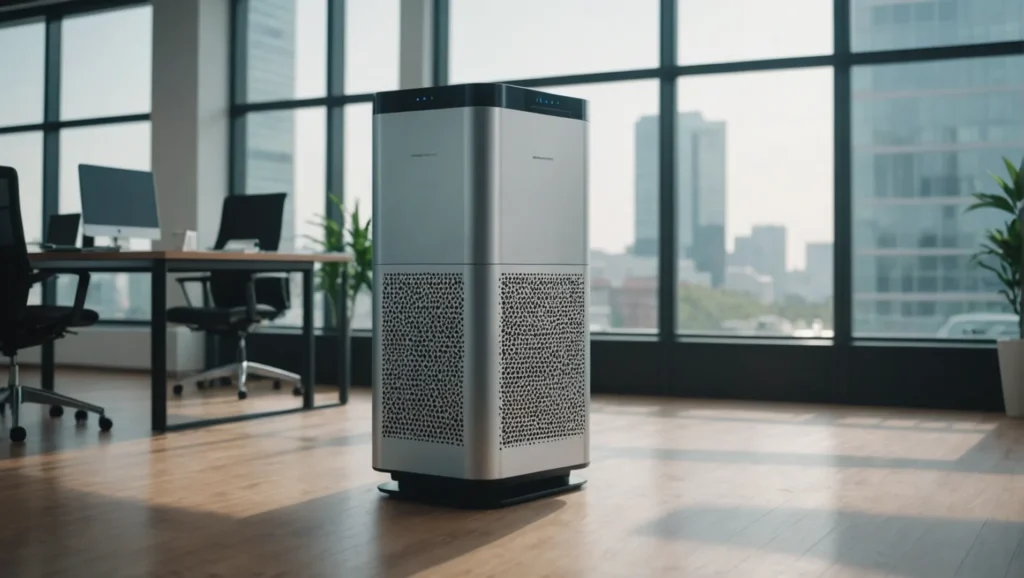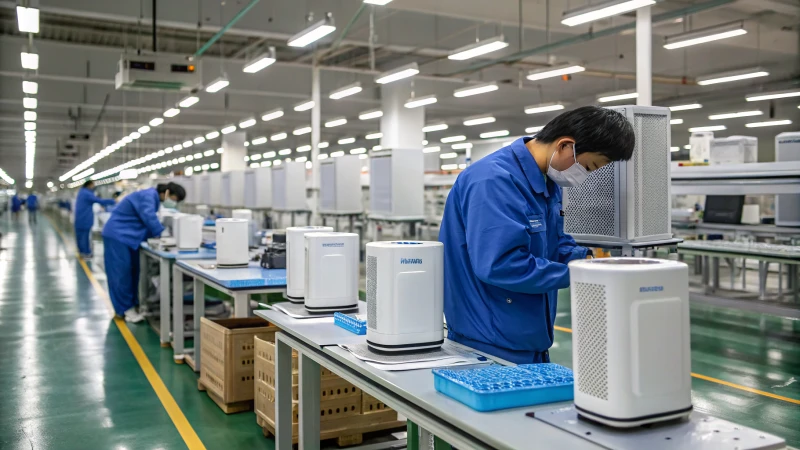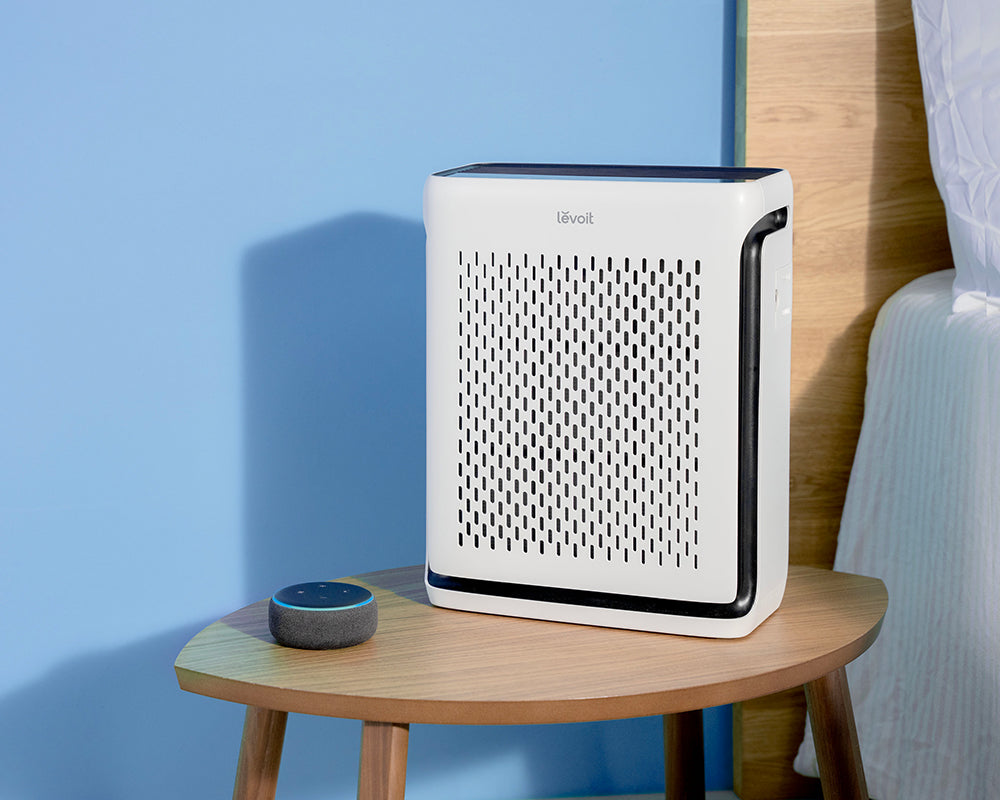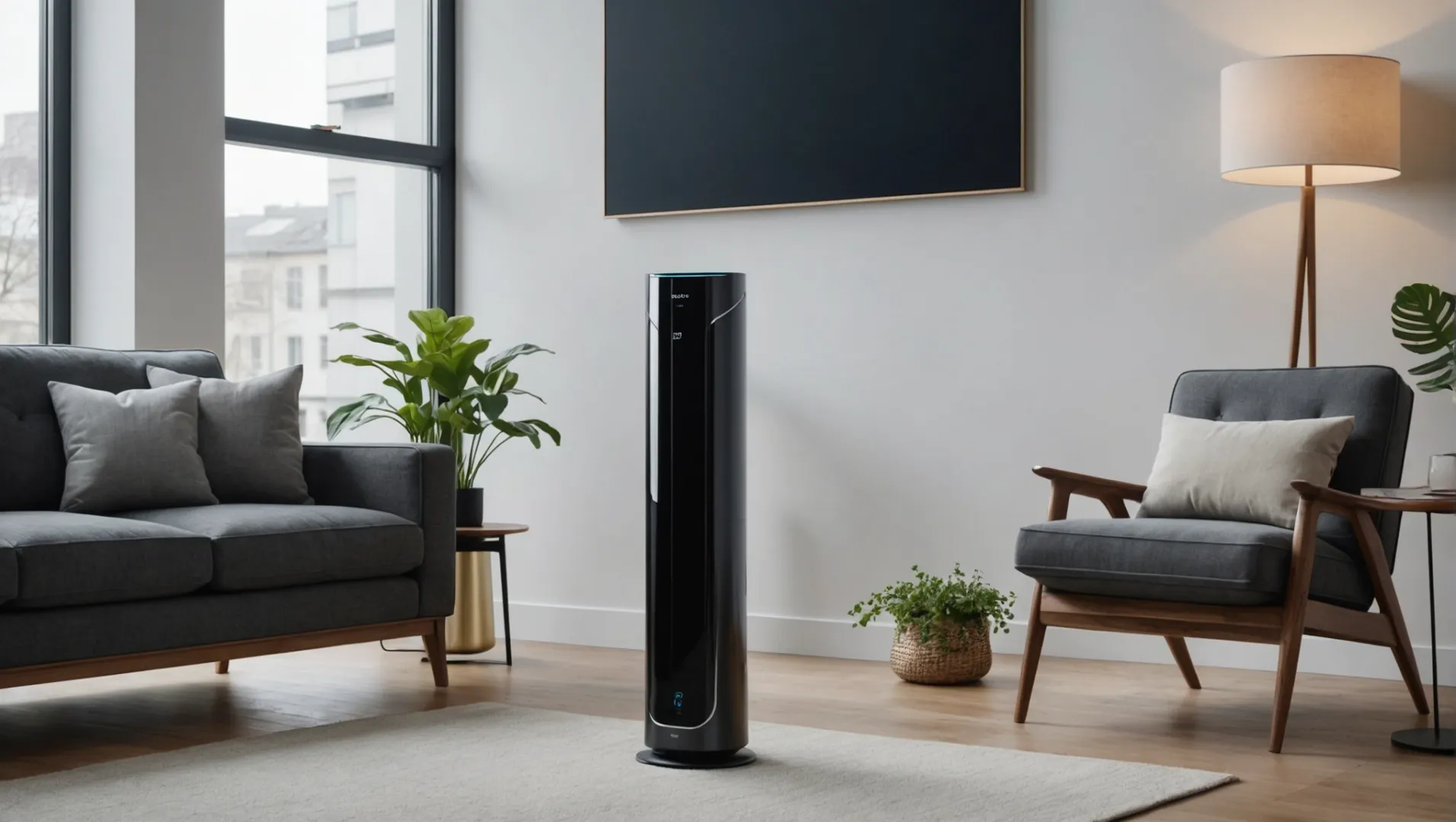
家の中に一歩足を踏み入れた瞬間、爽やかな気分になることを想像してみてほしい。それが不思議だ。 IoT とAIが空気清浄機を紹介!
IoT とAIは、リアルタイムのモニタリング、空気品質データに基づく自動調整、エネルギー効率の改善を可能にすることで、空気清浄機を強化します。これらのテクノロジーは最適な空気品質を確保し、より健康的で快適な生活環境を提供する。
シンプルな空気清浄機が何をするかは誰もが理解している。 IoT とAIがすべてを変える。これらのエキサイティングな変化は、多くの新機能をもたらす。最新の空気清浄機は、以前よりもスマートに機能するようになった。
IoT空気清浄機はリアルタイムで空気の質を監視する。真
IoT技術は、空気清浄機の常時観察とデータ収集を可能にする。
で可能になる主な機能とは? IoT 空気清浄機?
どのように IoT 接続によりエアクリーナーが交換され、性能と使いやすさが向上する。
IoT-対応空気清浄機は、リアルタイム・モニタリング、リモート・コントロール、エネルギー最適化、他のスマート・ホーム・システムとの統合機能を備えており、空気の質と利便性の向上を保証します。
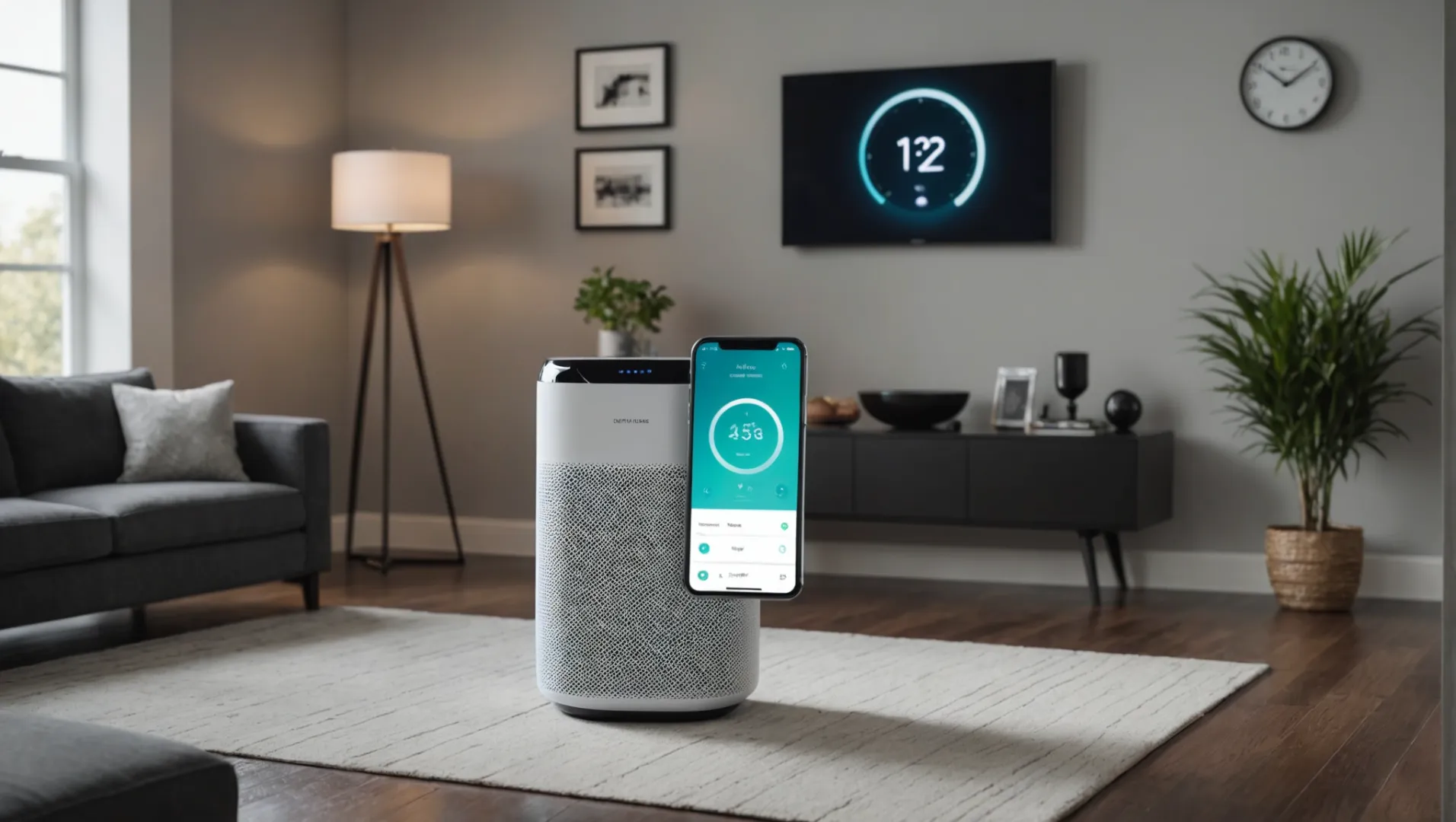
継続的な大気質チェックと情報収集
IoT 技術により、空気清浄機は常に空気の質を監視し、一定期間データを収集することができる。こうすることで、空気清浄機は空気状態の傾向を研究し、必要に応じて調整することができる。人々は携帯電話やその他の機器で詳細なレポートを観察し、周囲の汚染物質についての詳細を示す。
遠くからのコントロール
の大きな利点は IoT は離れた場所からコントロールできる。人々はモバイルアプリやオンラインプラットフォームを使って、どこからでも空気清浄機を操作することができる。この機能は、不在時に設定を変更したり、到着前に空気の質が良いかどうかをチェックしたりするのに便利だ。また、個人のスケジュールや好みに応じて自動的に変更することもできる。
エネルギーとお金の節約
IoT 空気清浄機は、スマートな動作でエネルギー使用量を削減する。センサーを使用してクリーニングが必要なタイミングを識別するため、ノンストップで作動するのではなく、必要な場合にのみ作動します。この機能により、エネルギーを保護し、フィルター寿命を延ばし、メンテナンスコストを削減します。
| 特徴 | メリット |
|---|---|
| 連続チェック | 大気の質の最新情報と理解をノンストップで提供 |
| ファーコントロール | どこからでも簡単にコントロールできる |
| 省エネ | エネルギー使用量と運転コストを削減 |
インテリジェント・ホーム・システムとの容易な統合
IoT 空気清浄機は、サーモスタット、照明、音声システムなど、他のスマート・デバイスとスムーズに融合する。この連携により、家の環境を完全にコントロールすることができ、理想的な生活環境を簡単に保つことができる。例えば、汚染度が上昇すると、空気清浄機はサーモスタットや照明にメッセージを送る。 空調 必要に応じて換気を変更するシステム。
として IoT 技術の発展により、空気清浄機にはより独創的な機能が期待され、私たちの快適さと健康を向上させる。
IoT空気清浄機はリアルタイムで空気の質を監視する。真
IoT技術は、ノンストップの大気質情報を提供する。
IoT空気清浄機の遠隔操作は不可能である。偽
アプリを使えば、ユーザーはどこからでも清浄機を操作できる。
AIは大気質管理をどのように改善するのか?
AIは、より賢くより効果的な選択肢を提供することで、私たちが空気環境を扱う方法を変える。
AIは予測分析、自動化、リアルタイムのデータ処理を通じて空気品質管理を改善し、屋内と屋外の空気環境を向上させる。

予測分析とリアルタイムモニタリング
人工知能(AI)は予測分析を活用し、大気質の変化を事前に予測する。過去のデータとリアルタイムのデータを分析することで、AIシステムは大気汚染の急増やその他の大気質の変化を予測することができる。これにより、換気設定を調整したり、居住者に窓を閉めるよう警告を発したりするなどの事前対策が可能になる。
例えば、スマートシティでは、都市部のあちこちに設置されたセンサーが汚染物質のデータを収集する。AIアルゴリズムはこのデータを処理してパターンを特定し、将来の大気質レベルを予測する。 都市大気質モニタリングの詳細1 都市がこれらの技術をどのように導入しているかを理解するためだ。
強化された空気浄化システム
AIを搭載した空気清浄機は、検出された空気の質に基づいて動作を自動的に調整する。これらの機器は、機械学習を利用して特定の環境やユーザーの習慣に適応し、効率と効果を向上させる。例えば、AIは時間帯や占有レベルに基づいてろ過速度や電力使用量を最適化することができる。
さらに、AIは他のスマートホームデバイスと統合することができ、変化する状況に動的に対応するまとまりのある環境を作り出すことができる。例えば、AIが高濃度の粒子状物質を検知すると、空気を浄化しながら快適さを維持するために照明を落としたり、サーモスタットを調整したりする。
カスタマイズされた空気品質ソリューション
空気品質管理におけるAIの統合は、パーソナライズされた環境制御を可能にする。AIシステムは、個人の健康上のニーズや嗜好、活動に応じて空気浄化の設定を調整することができる。このカスタマイズは単に空気を浄化するだけでなく、湿度、温度、騒音レベル、光の強さまで調整することができる。
長期にわたってユーザーのデータを収集することで、AIはウェルネスと快適さを促進するパーソナライズされた設定を推奨することができる。 パーソナライズされた空気浄化の仕組みを探る2 をご覧ください。
との統合 空調 システム
空気品質管理におけるAIの役割は、単体の清浄機にとどまらない。次のような分野にも広がっている。 空調 ビルや家庭内のシステム。AIアルゴリズムはこれらのシステムの性能を最適化し、優れた空気品質を維持しながら効率的に稼働することを保証する。
と統合することで 空調 AIは、室内環境を管理するためのより包括的なアプローチを可能にする。エネルギー効率や快適性を犠牲にすることなく、最適な空気品質を確保することができる。 AIがどのように変貌するかを見る 空調 システム3 これらのイノベーションの詳細については
AIは大気質の変化を事前に予測することができる。真
AIは過去と現在のデータを調査し、大気の質の変化を予測する。
AIはHVACシステムと空気品質を統合することはできない。偽
AIはHVACの機能を向上させ、室内空気の質を効果的に改善する。
空気清浄機にとってなぜリアルタイム・モニタリングが重要なのか?
空気清浄機のリアルタイム・トラッキングは、空気の状態の変化に素早く対応し、健康を守る。
リアルタイムモニタリングは、空気の質に関する継続的なフィードバックを提供し、空気清浄機が最適なパフォーマンスを発揮できるように設定を自動的に調整することを可能にします。この機能により、汚染物質やアレルゲンに迅速に対応し、一貫性のある安全な呼吸環境を実現します。
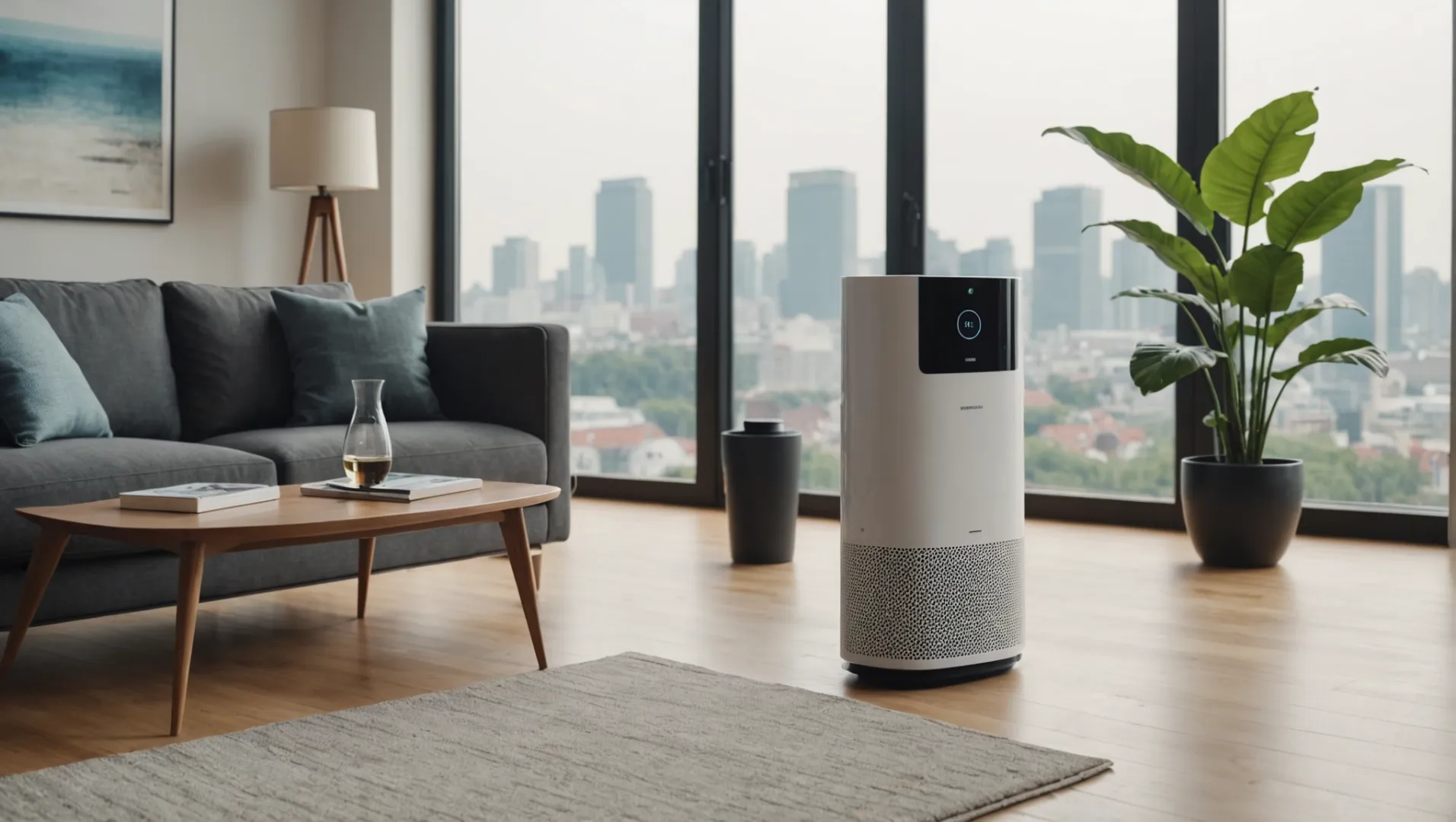
即座の観察が果たす役割
即座の観察は、従来の空気清浄機を、空気の変化に反応する能動的なツールに変える。室内の空気の質を定期的にチェックすることで、これらのツールは以下を保証する。 汚染物質レベル4 は安全なレベルに保たれ、空気は新鮮なままです。これは、外部の汚染源によって空気の状態が急激に変化する可能性のある都市環境では特に有益である。
ユーザー・エクスペリエンスの向上
リアルタイム・チェック機能を備えた空気清浄機は、多くの場合スマートフォンと接続し、ユーザーに家庭の空気環境に関する最新情報を提供する。この機能はユーザーに知らせるだけでなく、デバイスを遠隔操作することもでき、利便性と安心感を提供する。例えば、調理の煙によって空気の状態が悪化した場合、ユーザーは迅速にアラートを受け取ることができ、自宅にいなくても対応することができる。
オートメーションと省エネルギー
即時チェックは、空気清浄機がより効率的に作動するのに役立つ。空気清浄機は、現在の空気の質のデータに基づいて活動を調整し、汚染レベルが上昇したときにはより多くの電力を使用し、空気が新鮮なときにはより少ない電力を使用します。そのため、不必要に働きすぎることがなく、電力を節約しながらよりクリーンな環境を保つことができる。
| 特徴 | ベネフィット |
|---|---|
| 継続的なフィードバック | 空気の質を最適なレベルに保つ |
| 遠隔モニタリング | どこからでも管理可能 |
| 自己調整 | 省エネをサポート |
スマートホームシステムとの接続
スマートホームのセットアップの一部として、即時観測により空気清浄機は他のデバイスと通信し、統一された環境を作り出すことができる。例えば、センサーが高い二酸化炭素レベルを検出した場合、風量を増やすためにファンを作動させたり、快適さのためにスマート空調コントローラーを調整したりすることができる。このような統合は、以下のような技術によってよりスムーズになると予想される。 マター5異なるブランドのデバイスが簡単に協力できるようになる。
将来的には、個人の嗜好や健康上の必要性に基づいて空気清浄を調整するスマートシステムが登場し、リアルタイムの観察能力がさらに鋭くなることが予想される。このような技術が向上するにつれて、効果と健康の両方を確保するための即時観測の役割は大きくなっていくだろう。
リアルタイムモニタリングで空気清浄機を自動調整。真
リアルタイム観測により、空気清浄機は空気の質に応じて設定を調整できる。
リアルタイム監視機能付き空気清浄機は、エネルギーを節約する。真
空気の質に応じて活動を変更し、不要なエネルギー消費を抑える。
将来の技術革新は空気清浄機をどう変えるか?
空気清浄技術の今後の進歩は、私たちの日常にスムーズに溶け込み、私たちが室内で呼吸する空気を再構築することを約束する。
今後、空気清浄機のイノベーションは、スマートホームシステムとの統合、AIを活用したパーソナライゼーション、空気清浄機と調和する目に見えないデザインに焦点が当てられるだろう。 空調 システムを導入し、大気質管理を強化する。
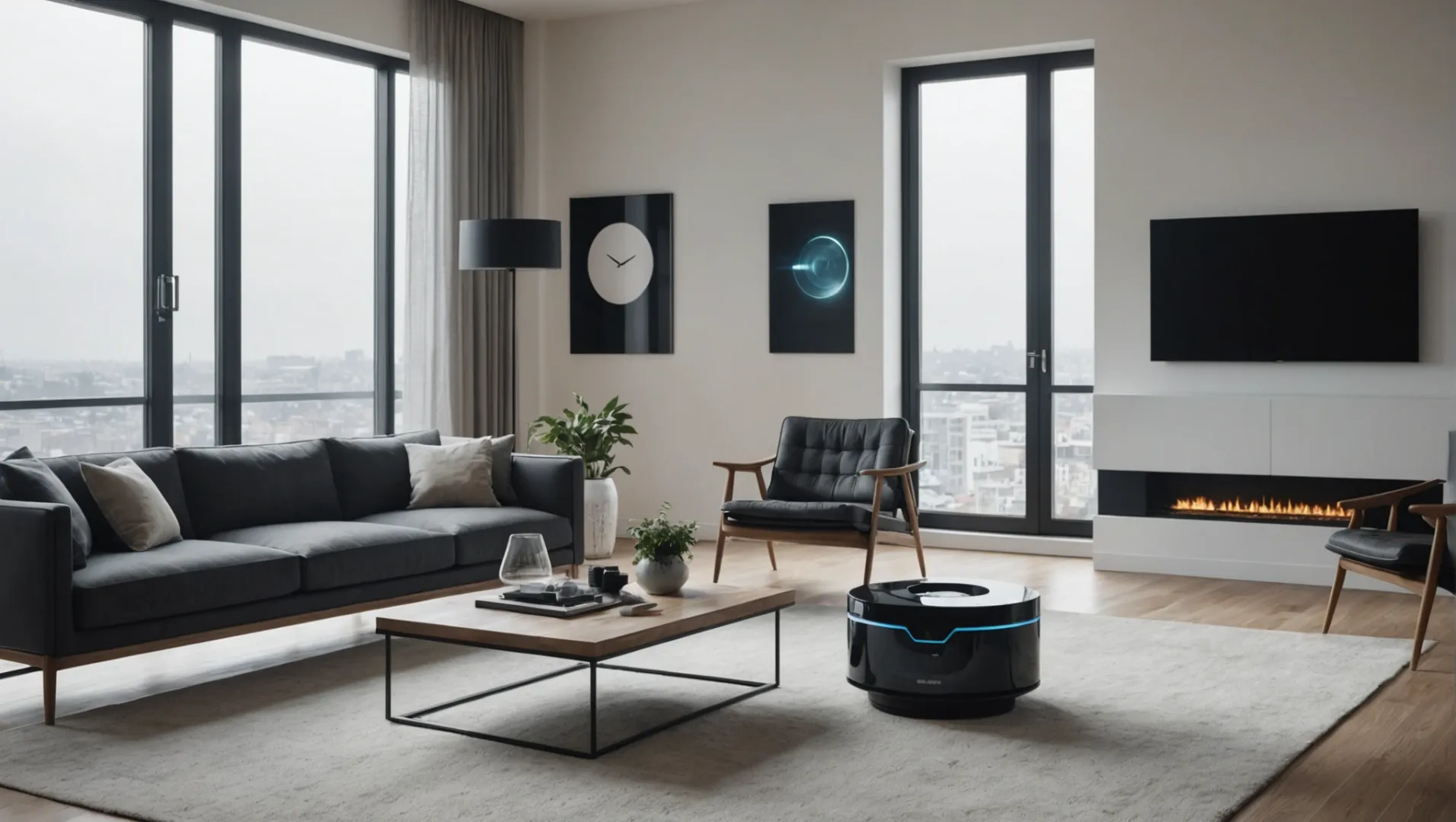
スマートホームシステムとの統合
今後数年間で、空気清浄機はMatterのようなセットアップを使ってスマートホームシステムに加わることが予想される。このセットアップにより、さまざまなブランドのガジェット間でシームレスな通信が可能になり、空気清浄機が照明、サーモスタット、セキュリティ・デバイスと相互作用できるようになる。例えば、サーモスタットが検知した温度と湿度レベルに基づいて清浄機が自動的に設定を調整し、室内の快適性を高めることができる。
AIによるカスタマイズ
人工知能(AI)は、空気清浄にカスタマイズという新たな要素をもたらすことを約束する。ユーザーの行動や好みを観察することで、AIシステムは空気品質設定を個人のニーズに合わせることができる。これには、湿度、温度、騒音レベル、光の強さ、さらには酸素濃度を調整し、パーソナライズされたウェルネス設定を作り出すことが含まれる。空気をきれいにするだけでなく、仕事や休息に最適なムードを設定する清浄機を想像してみてほしい。
隠しエア・クリーニング
将来的には、空気清浄機はスタンドアローンのユニットではなくなる可能性がある。 空調 システムや建物の設計を変更した。これらの変更は、空気清浄を「隠す」ことを目的としており、スペースを占有したり、部屋の美観を損ねたりすることなく、より清浄な空気を提供する。建物の構造の一部となることで、これらのシステムは、すべてのエリアを通じて継続的な空気品質管理を提供する。
高度なデータ理解とモニタリング
の進歩に伴い IoT やAIを活用することで、今後発売される空気清浄機は、より高度なデータ理解能力を提供できるようになるかもしれない。早期のメンテナンスのためのリアルタイムの追跡とアラートが標準機能になり、ユーザーが室内の空気質をプロアクティブに管理できるようになるかもしれない。これには、フィルターの交換が必要になったときや、異常な空気品質パターンが検出されたときの通知も含まれる。
これら イノベーション6 は、私たちの空気清浄機に対する認識と使い方を変え、空気清浄機をスマートで健康的な家庭の重要な構成要素に変えようとしている。
空気清浄機はスマートホームシステムと統合される。真
将来の空気清浄機は、Matterのようなスマートホームシステムと連動するかもしれない。
AIが空気清浄機の設定に影響を与えることはない。偽
AIはおそらく、ユーザーの選択に応じて空気清浄をカスタマイズするのだろう。
結論
IoT とAIは、空気がクリーンであり続ける方法を変えつつある。健康的な生活空間のために、これらの改善を受け入れよう。
-
大気質モニタリングにAIを活用する都市..:CALIOPE-Urbanは、BSC大気質予測システムであるCALIOPE地域モデルの技術と、大気質モニタリングにAIを活用した都市モデルを組み合わせたものです。 ↩
-
空気清浄のカスタマイズにおけるAIの役割を理解する:AIによる空気モニタリング|迅速な空気清浄|ゲームを変える拡張システム|ローメンテナンス|フレグランスモード|IoT&無料アプリ. ↩
-
AIがHVACシステムの効率に与える影響について学ぶ..:AIはHVACシステムに目覚ましい進歩をもたらします。その進歩には、インテリジェントなデータ分析、予知保全、エネルギー最適化、故障検知、故障診断などが含まれる。 ↩
-
リアルタイムの汚染モニタリングがどのように健康と安全を向上させるかをご覧ください:大気質モニタリングは、大気の質を改善し、公衆衛生を守り、規制を確実に遵守するための重要なツールです。 ↩
-
Matterがスマートホームデバイスをシームレスに接続する方法を発見しよう:Matterキャスティングは、対応するスマートフォンアプリのコンテンツをテレビやスマートディスプレイにキャストできる。 ↩
-
次世代の空気浄化技術を形成する最先端の開発をご覧ください:その一つがUVGI空気浄化技術である。UVGIとはUltraviolet Germicidal Irradiationの略で、紫外線殺菌照射とも呼ばれています。 ↩


